Embarking on the journey to build your dream cross-country (XC) mountain bike is an exciting endeavor. At the heart of this project lies the most critical decision: selecting the perfect frame. A 29er XC full suspension carbon frame represents the ultimate fusion of speed, efficiency, and control, designed to conquer demanding trails while remaining lightweight and responsive.
But with a myriad of options available, how do you ensure you're making the right choice? This comprehensive guide will walk you through the essential factors to consider, using the exemplary TRIFOX Trail II Pro Full Suspension Carbon MTB Frame as a benchmark for what a top-tier frame should offer.
1. Geometry: The Blueprint of Performance
The geometry of a frame is the DNA of your bike's handling characteristics. For modern XC and downcountry riding, the goal is a blend of aggressive climbing efficiency and confident descending stability.
Head Tube Angle (HTA): A slacker HTA boosts stability on technical descents. The TRIFOX Trail II Pro features a 67.5-degree head angle, which is progressive for an XC frame, providing increased confidence when the trail turns downward.
Seat Tube Angle (STA): A steeper STA positions the rider optimally over the bottom bracket, enhancing climbing efficiency and power transfer. The Trail II Pro's 75.5-degree seat angle ensures you can tackle steep climbs effectively.
Reach and Stack: These measurements define your cockpit space and riding posture. Modern geometries tend toward longer reach and lower stack for improved stability and a more aerodynamic riding position.
Why it matters: The right geometry ensures the bike feels intuitive and responsive. The Trail II Pro's geometry strikes a perfect balance, making it adept at both winning races and tackling technical trail features.
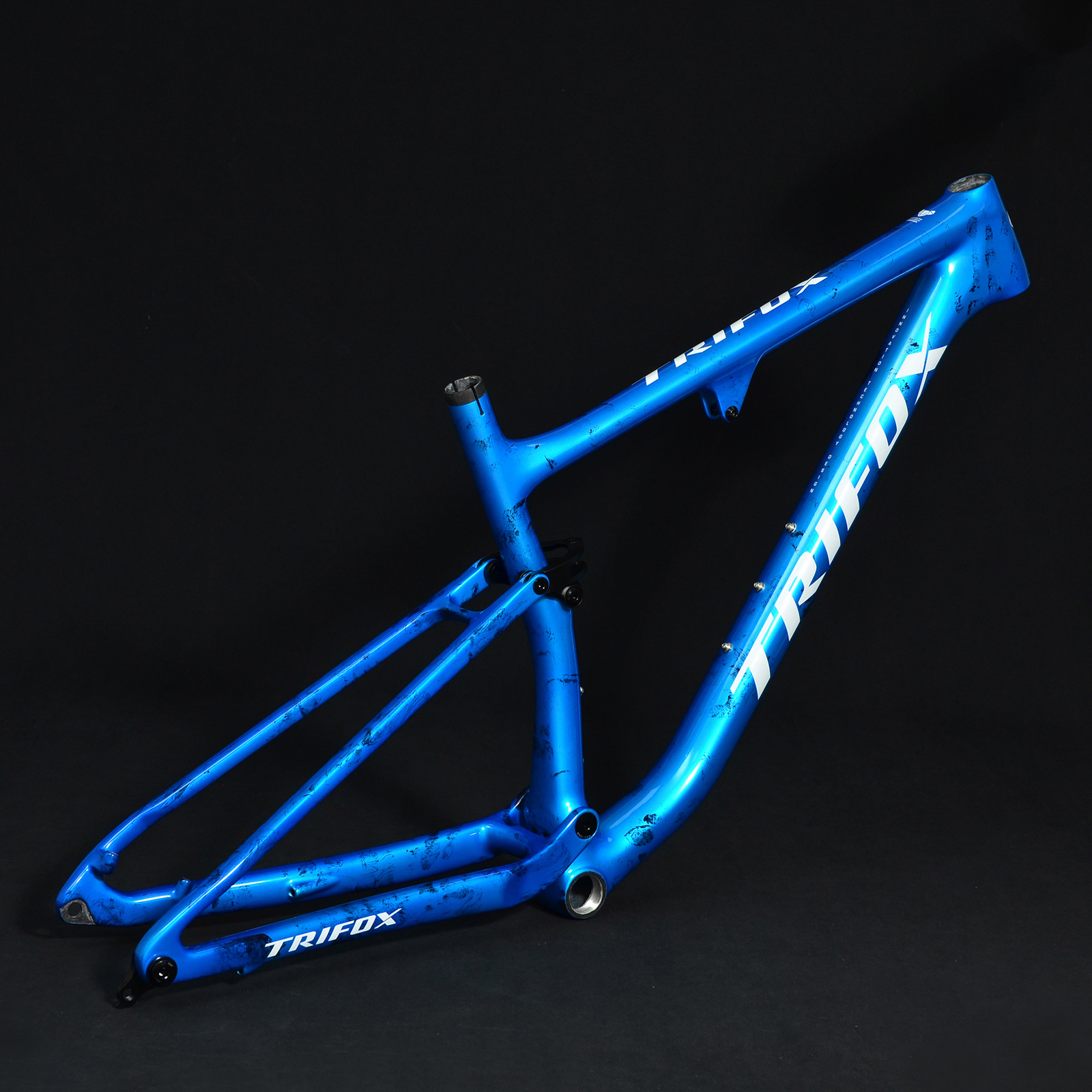
2. Suspension Design: The Heart of the Ride
A full-suspension XC bike must offer traction and comfort without compromising pedaling efficiency. The design of the suspension linkage is paramount.
Linkage Type: The TRIFOX Trail II Pro employs a highly efficient four-bar suspension system. This design is renowned for its ability to minimize pedal bob, ensuring that your energy is directed into forward momentum rather than being absorbed by the suspension.
Travel: For XC purposes, 35-45mm of rear travel is the gold standard. It provides sufficient absorption for rough terrain and maintains grip without sacrificing the snappy, efficient feel essential for climbing and acceleration. The Trail II Pro is designed around this ideal 35-45mm of travel.
Anti-Squat and Kinematics: Advanced suspension kinematics with high anti-squat values keep the frame taut under power, translating to efficient pedaling—a non-negotiable trait for any serious XC frame.
3. Carbon Fiber Quality: Where Engineering Meets Art
The grade and construction of the carbon fiber directly influence weight, stiffness, compliance, and overall durability.
Carbon Grade: Look for frames utilizing high-modulus carbon fibers. The TRIFOX Trail II Pro is crafted from T800 carbon fiber, a premium material that allows for an exceptional strength-to-weight ratio. This results in a frame that is both incredibly light and impressively robust.
Layup Process: The artistry of carbon frame building lies in the layup. Precision hand-laying allows engineers to tailor the flexibility and stiffness in specific areas. The down tube and bottom bracket can be reinforced for stiffness and power transfer, while the seat stays can be designed to offer vertical compliance, smoothing out trail vibrations.
Why it matters: A high-quality carbon frame like the Trail II Pro delivers a ride quality that is stiff and responsive when you stamp on the pedals yet surprisingly comfortable over long, rugged distances.
4. Modern Features and Compatibility: Future-Proofing Your Investment
A modern frame must adhere to current component standards to ensure compatibility and ease of upgrades.
Dropper Post Compatibility: The ability to run a dropper post is essential for modern trail riding. The Trail II Pro features internal routing for a 30.9mm dropper post, allowing for a clean setup and confident descending.
Boost Spacing: The frame boasts 148x12mm Boost rear spacing and 110x15mm front spacing. This standard increases wheel stiffness, improves tire clearance, and enhances overall handling precision.
Threaded Bottom Bracket: A BSA threaded bottom bracket is a signature feature of a well-thought-out frame. It is renowned for its reliability, ease of maintenance, and resistance to creaking—a common issue with press-fit systems.
Internal Cable Routing: Full internal routing for derailleur and dropper posts not only creates a sleek, aesthetic look but also protects the cables from dirt and damage.
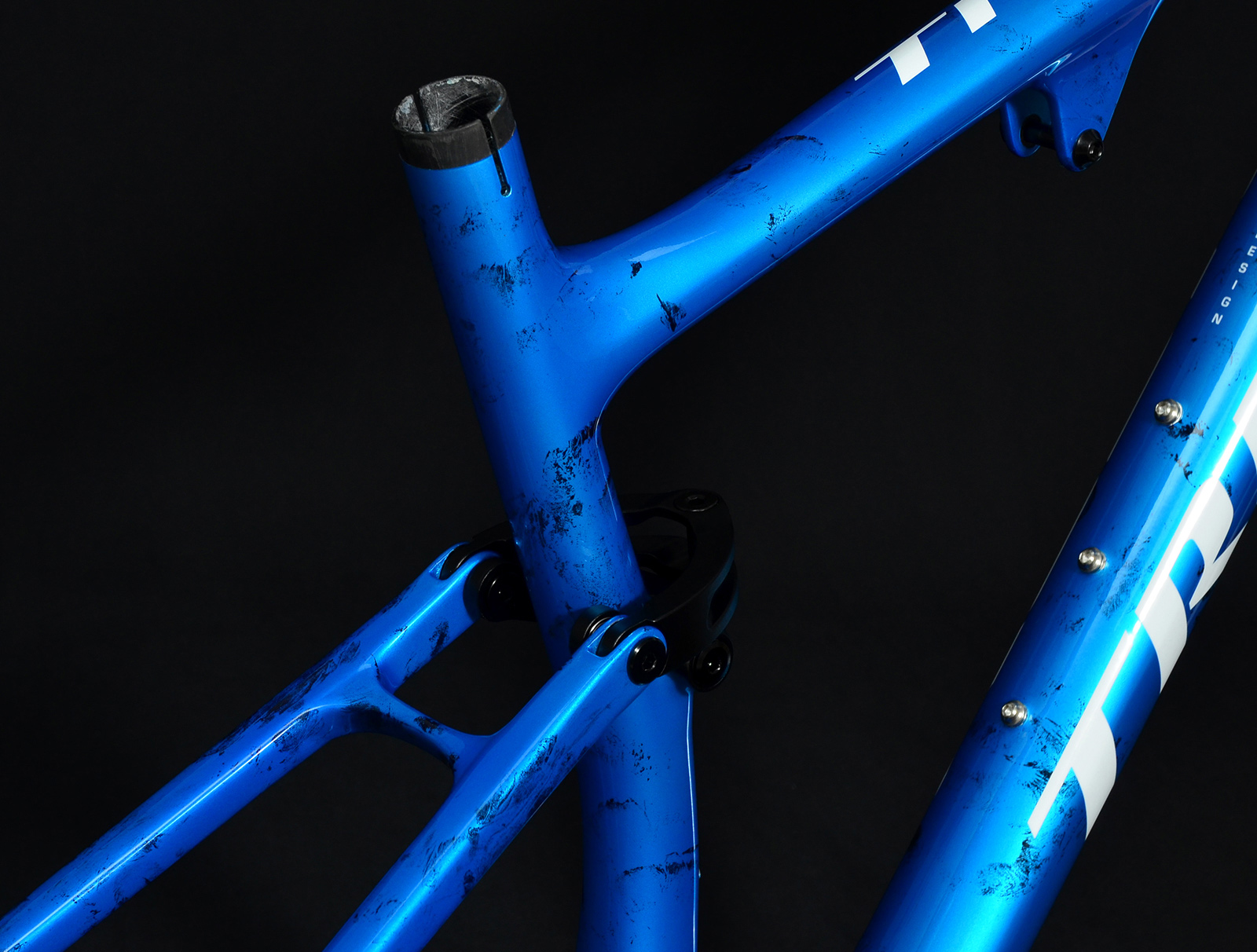
5. Weight and Value Proposition
The pursuit of lightness is central to XC. The TRIFOX Trail II Pro frame weighs approximately 1272g-1336g, placing it firmly in the competitive range for high-performance carbon frames. When evaluating price, consider the value offered by direct-to-consumer brands like TRIFOX, which provide cutting-edge technology and materials at a fraction of the cost of many major brands.
Conclusion: The TRIFOX Trail II Pro – A Paradigm of Intelligent DesignSelecting the perfect frame is a process of matching your riding ambitions with engineering excellence. By focusing on geometry, suspension design, carbon quality, and modern features, you can make an informed decision that will define your ride for years to come.
The TRIFOX Trail II Pro 29er XC Full Suspension Carbon Frame emerges as a standout option that exemplifies these principles:
Its modern geometry inspires confidence across diverse terrain.
The efficient four-bar suspension delivers traction without compromise.
The T800 carbon construction offers a sublime blend of lightness and strength.
Its future-proof features ensure compatibility with the best components on the market.
By using this guide and the Trail II Pro as a reference, you are equipped to choose a frame that will form the foundation of an exceptional mountain bike, ready to push the limits of speed and performance.

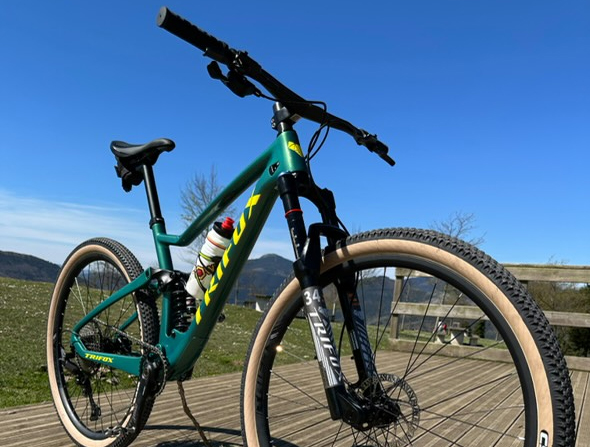
Mountain biking thrives on adrenaline, but as trails get gnarlier, your hardtail might struggle. So, when is it time to switch to a full suspension bike?
1. Your Terrain Demands It
If you’re tackling rocky descents, root-covered paths, or technical drops, a full suspension bike absorbs shocks better, keeping you in control. TrifoxBike’s designs, like the Trifox Full Suspension MTB, feature optimized rear travel to smooth out rough trails, reducing fatigue and improving traction.
2. Your Riding Style Gets Aggressive
Downhill shredders, jump enthusiasts, and enduro racers benefit from dual suspension. The added stability at high speeds and landings protects your body and bike. TrifoxBike’s frames balance lightweight durability with responsive suspension, ideal for pushing limits.
3. You Ride Frequently
Regular riders logging long hours need comfort. Full suspension reduces joint strain, letting you ride longer. TrifoxBike integrates ergonomic designs without sacrificing efficiency, making their bikes a smart choice for daily adventurers.
4. Your Skills Outgrow Your Bike
Advanced riders tackling steeper lines or faster corners need bikes that match their progression. Full suspension offers confidence to tackle technical features. TrifoxBike’s models support skill growth with precision handling and adjustable setups.
5. Budget Allows for Investment
While pricier than hardtails, TrifoxBike delivers high-value builds with premium components like air shocks and durable pivots. If your riding justifies the cost, it’s a worthy upgrade.
6. You Prioritize Traction
Wet, loose, or uneven terrain demands grip. Full suspension maintains tire contact, enhancing control. Pair this with TrifoxBike’s grippy tire compatibility, and you’ve got a trail-eating machine.
7. Maintenance Doesn’t Intimidate You
Full suspension requires more upkeep, but TrifoxBike’s reliable seals and accessible pivot points simplify care, ensuring longevity.
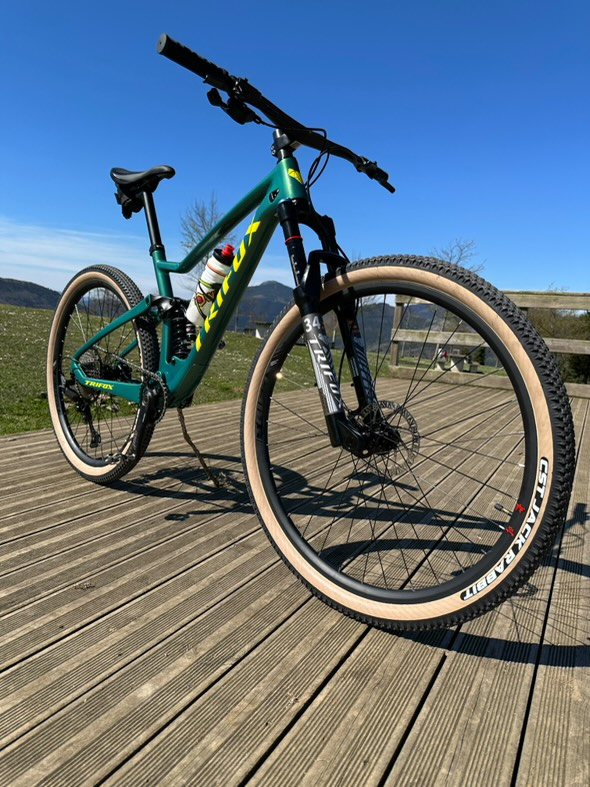
Upgrade if your trails, style, or ambition demand more. TrifoxBike’s full suspension range blends performance and value, ready to elevate your ride.
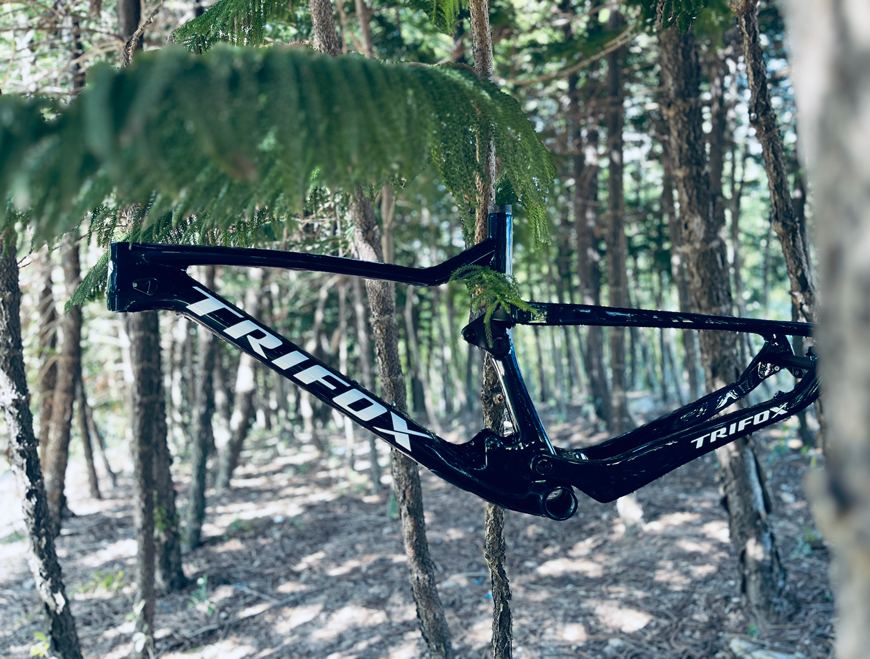
The age-old debate between hardtail (front suspension only) and full-suspension mountain bikes boils down to one question: What kind of rider are you? Let’s dissect the pros, cons, and ideal use cases for both setups to help you decide—and explore how brands like Trifox cater to diverse preferences.
Hardtail (Without Rear Suspension)
Pros:
- Lightweight: Fewer parts mean easier climbing and faster acceleration.
- Lower Cost: Affordable to buy and maintain (no rear shock or pivot bearings).
- Efficiency: Direct power transfer makes pedaling feel responsive, ideal for smooth trails or XC racing.
- Simplicity: Less maintenance and easier DIY repairs.
Cons:
- Rough Ride: Rear impacts are absorbed solely by your legs, leading to fatigue on technical terrain.
- Traction Limits: Less control on loose or rocky descents.
Full-Suspension
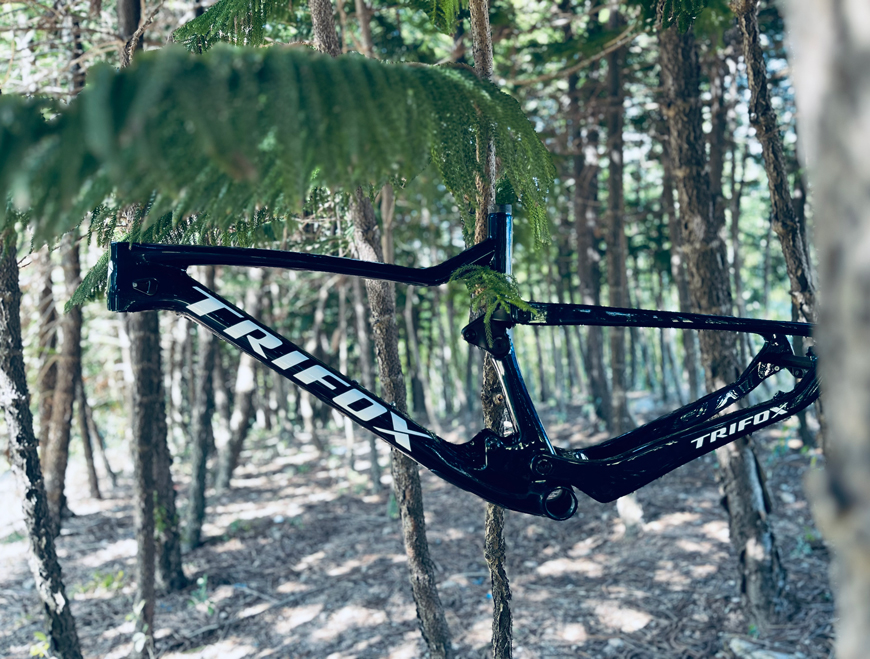
Pros:
- Comfort & Control: Rear shocks smooth out bumps, reducing fatigue and improving grip on chunky trails.
- Versatility: Confidently tackle downhill, enduro, or all-day adventures.
- Speed: Maintain momentum through rough sections.
Cons:
- Weight & Cost: Heavier frame and higher upfront/maintenance costs.
- Complexity: More moving parts mean more potential for mechanical issues.
Who Should Ride What?
- Choose a Hardtail If: You prioritize budget-friendly efficiency, ride smoother trails, or love climbing. Models like Trifox’s hardtails excel here, blending lightweight frames with trail-ready geometry.
- Choose Full-Suspension If: You crave technical descents, endurance rides, or park laps. Trifox’s full-suspension bikes offer balanced travel and durability for aggressive terrain.
Key Considerations
1. Terrain: Rocks, roots, and drops? Full-suspension shines. Pavement or flow trails? Save weight with a hardtail.
2. Budget: Hardtails cost less upfront and long-term.
3. Skill Level: Beginners may appreciate a hardtail’s simplicity; advanced riders often leverage full-squish capabilities.
There's no “better” option—only what's better for you. Hardtails reward efficiency and simplicity, while full-suspension bikes unlock technical prowess and comfort. Test both if possible, and consider Trifox’s range to match your riding style. Whether you're chasing KOMs or sending drops, the right suspension setup ensures every ride feels like freedom.
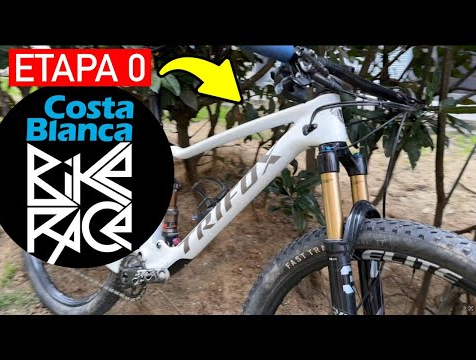
Mountain bikers, assemble! We’ve got something that's going to blow your mind—a surprise unboxing that might just reveal a glimpse of the future of mountain biking. Could this be a 2025 MTB?
In this thrilling video, we crack open a mysterious package that could be hiding the next big thing in trail technology. From the moment the box is opened, it’s clear this bike is something special. The sleek design, advanced components, and innovative features have us wondering if this is a prototype of what’s to come in 2025.
If you're as excited about full-suspension mountain bikes as we are, you’ll want to check out Trifox Bike’s incredible lineup. The full-suspension models are built for performance, durability, and all-out trail domination. Explore their collection here: Trifox Full-Suspension Mountain Bikes.
Whether this unboxing reveals a 2025 model or just a taste of cutting-edge innovation, one thing's for sure: the future of mountain biking looks incredibly bright. Don’t miss out—watch the video, share your thoughts, and get ready to hit the trails in style!
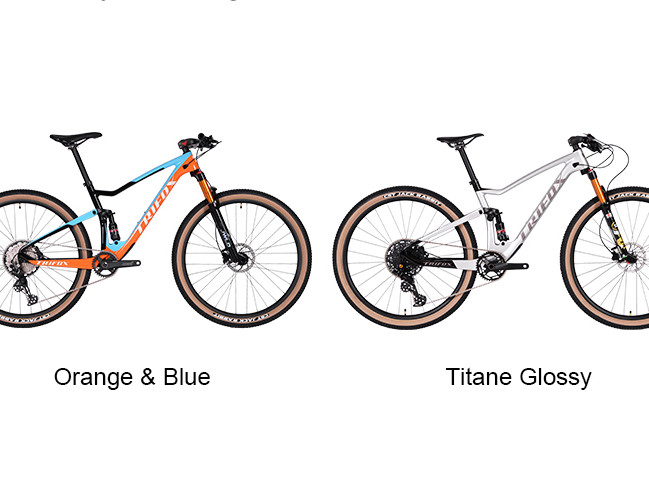
Setting up and adjusting a double suspension frame, such as the Trifox MFM100 Full Suspension Carbon MTB Frame, can significantly enhance your mountain biking experience. A well-tuned suspension system ensures better control, improved traction, and a more comfortable ride over rough terrain.
Understanding Double Suspension
Double suspension, or full suspension, refers to a bike that has both front and rear shock absorbers. This system helps absorb impacts from rough trails, allowing for a smoother ride and better handling. The Trifox MFM100, with its carbon construction, offers a lightweight yet durable option for serious riders.
Tools and Materials Needed
Shock Pump: For adjusting air pressure in the suspension.Allen Wrench Set: For making adjustments.Torque Wrench: For precise tightening.Sag Setup Tool (optional): For setting correct sag.Lubricant: For maintaining smooth operation.
Step-by-Step Setup and Adjustment Guide
Step 1: Install the Frame
If you haven't already installed your double suspension frame, follow these steps:
Install Headset and Fork: Begin by installing the headset and fork according to the manufacturer's instructions.Attach Rear Shock: Securely attach the rear shock to the frame using the provided hardware. Ensure bolts are torqued to the manufacturer's specifications.
Step 2: Setting the Sag
Sag is the amount of suspension travel used when you’re sitting on the bike in a neutral position. Proper sag setup is crucial for optimal performance.
Measure Sag: Ideally, sag should be around 25-30% of the total travel for both front and rear suspension.Adjust Air Pressure: Use a shock pump to add or release air from the front fork and rear shock until the desired sag is achieved. Most shocks have a recommended pressure range based on rider weight.
Step 3: Adjusting Rebound and Compression
Rebound and compression adjustments control how quickly the suspension returns to its original position after compression and how it handles impacts, respectively.
Rebound Adjustment: Locate the rebound adjustment knob, usually marked with a '+' and '-'. Start by setting it to the midpoint. Test the bike and adjust to your preference—slower rebound for rougher terrain, faster for smoother trails;Compression Adjustment: If your suspension has compression adjustment, start at the recommended factory setting. Adjust accordingly based on trail conditions and personal preference. More compression for smoother trails and less for rough, technical terrain.
Step 4: Fine-Tuning
Test Ride: Take your bike for a short ride over varied terrain. Pay attention to how the suspension feels and make note of any adjustments needed;Adjust as Needed: Based on your test ride, fine-tune the sag, rebound, and compression settings. Small adjustments can make a significant difference in performance.
Step 5: Maintenance Tips
Proper maintenance is essential for keeping your double suspension frame performing at its best.
Regular Cleaning: Clean the frame and suspension components regularly to prevent dirt and grime buildup;Inspect for Wear: Check for any signs of wear or damage, particularly on the stanchions and seals;Lubricate: Apply appropriate lubricant to moving parts as per manufacturer’s recommendations.
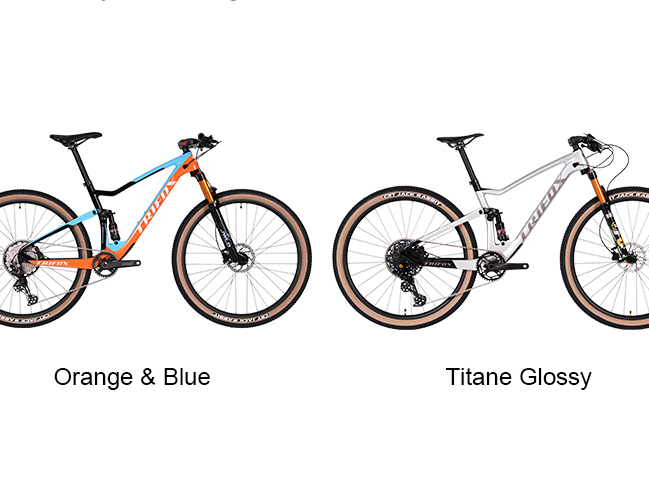
Conclusion
Setting up and adjusting a double suspension frame like the Trifox MFM100 Full Suspension Carbon MTB Frame can dramatically improve your riding experience. By carefully following the steps for installing, setting sag, adjusting rebound and compression, and maintaining your bike, you’ll enjoy a smoother, more controlled ride.
Whether you're tackling technical descents or cruising over rocky trails, a well-tuned suspension system ensures maximum performance and comfort. Happy riding!
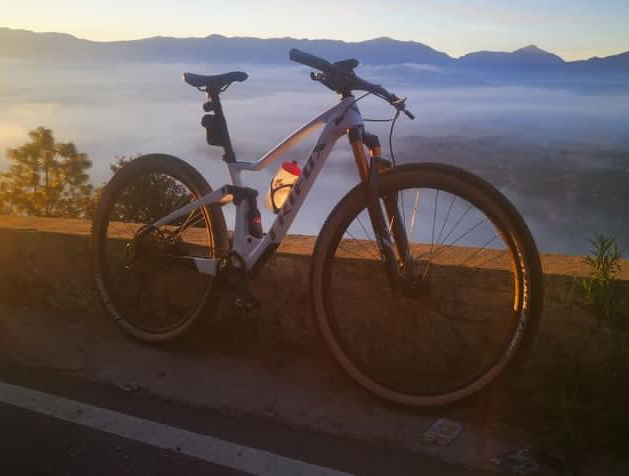
Choosing the right front suspension for your bike can significantly enhance your riding experience, whether you're tackling technical trails, cruising through city streets, or exploring gravel paths. The correct suspension setup improves comfort, control, and performance, tailored specifically to your riding style.
1. Understand Your Riding Style
Cross-Country (XC)
If you're into cross-country riding, which involves long-distance rides over varied terrain with a focus on speed and efficiency, you’ll benefit from a lightweight suspension fork. XC riders typically prefer front suspensions with 80-100mm of travel. This range provides enough cushioning for bumps and roots while keeping the bike nimble and efficient for climbing and long rides.
Trail Riding
For those who enjoy trail riding, which encompasses a mix of uphill, downhill, and technical sections, a versatile suspension fork with 120-140mm of travel is ideal. This setup offers a balance between climbing efficiency and downhill control, absorbing larger impacts and providing better stability on rough terrain.
Enduro
Enduro riders face more demanding descents and technical trails, requiring robust and responsive suspension. Forks with 150-180mm of travel are common in enduro bikes, offering maximum impact absorption and control at high speeds over challenging terrain. These forks are generally heavier but provide the durability needed for aggressive riding.
Downhill (DH)
For downhill enthusiasts who prioritize descending over all else, suspension travel extends from 180mm to over 200mm. These heavy-duty forks are designed to handle big jumps, drops, and rugged terrain at high speeds. They offer unparalleled control and stability but are less efficient for climbing due to their weight and travel.
2. Suspension Types: Air vs. Coil
Air Suspension
Air suspension forks use an air chamber to provide spring force. They are lighter and more adjustable than coil forks, making them popular among a wide range of riders. By adjusting the air pressure, you can fine-tune the suspension to your weight and preferred ride feel.
Coil Suspension
Coil suspension forks use a metal coil spring. They are generally heavier but offer consistent performance over prolonged periods and under extreme conditions. Coil forks are often favored by downhill and enduro riders for their plushness and reliability, especially in rough and repeated impacts.
3. Key Features to Consider
Adjustability
Look for forks with adjustable compression and rebound damping. Compression damping controls how the fork reacts to impacts, while rebound damping manages how quickly the fork returns to its original position after compression. Adjustable forks allow you to customize your suspension to different trails and conditions.
Lockout
A lockout feature allows you to rigidly lock the fork, reducing or eliminating suspension movement. This is particularly useful for climbing or riding on smooth surfaces where suspension bob can waste energy.
Travel Adjust
Some forks offer adjustable travel, enabling you to change the amount of suspension travel based on the trail. This feature adds versatility, allowing one fork to adapt to various riding styles and terrains.
Weight
Consider the weight of the suspension fork, especially if you’re into cross-country or trail riding where climbing efficiency is critical. Lighter forks enhance your overall bike performance and reduce fatigue over long distances.
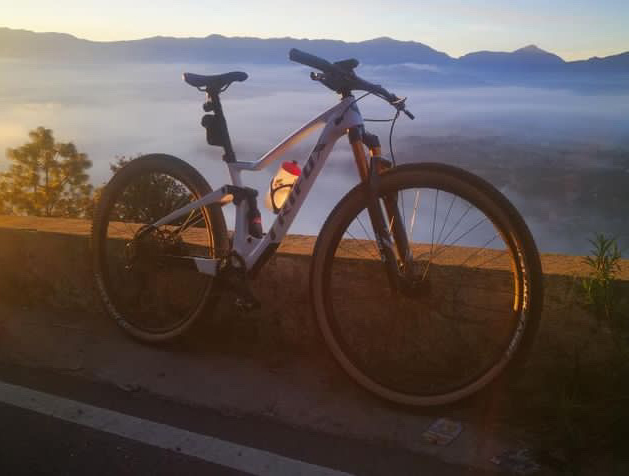
Conclusion
Selecting the best front suspension for your bike involves understanding your riding style, choosing the right type of suspension, considering key features like adjustability and weight, and balancing your budget. By tailoring the front suspension to your specific needs, you’ll improve your riding experience, comfort, and performance, ensuring you get the most out of every ride. Happy trails!
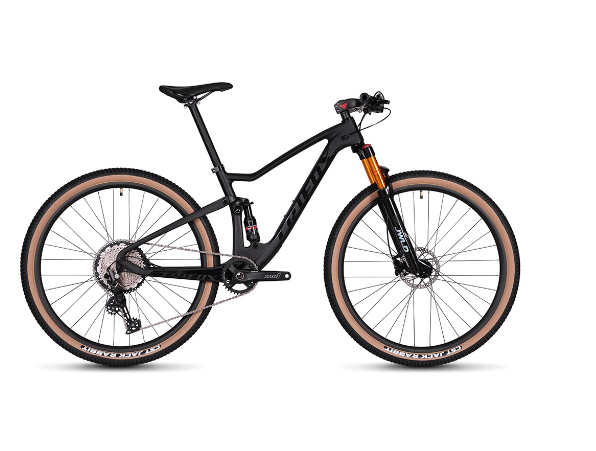
Competitive mountain biking is a sport that demands physical strength, technical skills, and mental resilience. With the right training regimen and equipment, you can prepare yourself to face the challenges of the trail head-on.
Preparing Your Equipment: The Trifox Pioneer Full Suspension Bike
Before you begin your training, it's crucial to have the right equipment. The Trifox Pioneer full suspension bike is an excellent choice for competitive mountain biking. It features a lightweight carbon fiber frame, full suspension for improved control on rough terrain, and a high-quality drivetrain for smooth, reliable shifting.
Ensure your bike is properly set up before you start training. Adjust the saddle height for optimal pedaling efficiency, and fine-tune the suspension settings to match your weight and riding style. Regular maintenance, including cleaning and lubricating the drivetrain, checking tire pressure, and inspecting the brake pads, is also essential to keep your bike in top condition.
Physical Training for Competitive Mountain Bike
1. Endurance Training
Endurance is crucial for competitive mountain biking. Incorporate long, steady rides into your training routine to improve your cardiovascular fitness. Start with shorter distances and gradually increase your mileage as your fitness improves.
2. Strength Training
Mountain biking requires strength, particularly in the core and upper body. Include strength training exercises in your routine, focusing on the abs, back, arms, and shoulders. Squats and lunges can help strengthen your legs for more powerful pedaling.
3. High-Intensity Interval Training
HIIT involves short bursts of intense exercise followed by recovery periods. This type of training can help improve your power and speed, both of which are important for competitive mountain biking.
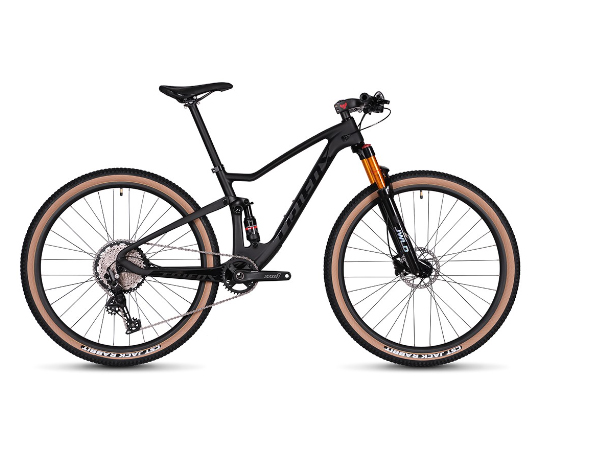
Technical Skills Training
1. Bike Handling Skills
Practice maneuvers like cornering, climbing, descending, and navigating obstacles. Mastering these skills can help you maintain control of your bike in challenging trail conditions.
2. Gear Shifting
Effective gear shifting can help maintain your momentum on varying terrains. Practice shifting gears smoothly during your training rides.
3. Brake Control
Good braking technique is crucial for safe and efficient riding. Practice using both brakes together for balanced stopping power, and learn to modulate your braking to avoid skidding.
Mental Preparation
Competitive mountain biking also requires mental toughness. Visualization techniques can help you prepare for the challenges of a race. Imagine yourself successfully navigating the course and overcoming obstacles. This can boost your confidence and improve your performance on race day.
Training and preparing for competitive mountain biking is a demanding but rewarding process. With the right equipment like the Trifox Pioneer full suspension bike, a comprehensive training regimen, and a strong mindset, you can take your performance to new heights.

Dual suspension bicycles, also known as full-suspension bicycles, offer a comfortable ride over rough terrain. They absorb shocks from both the front and rear wheels, reducing the impact on the rider. However, to keep your ride smooth and your bicycle in top condition, regular maintenance and proper adjustment are key. This guide will walk you through the process.
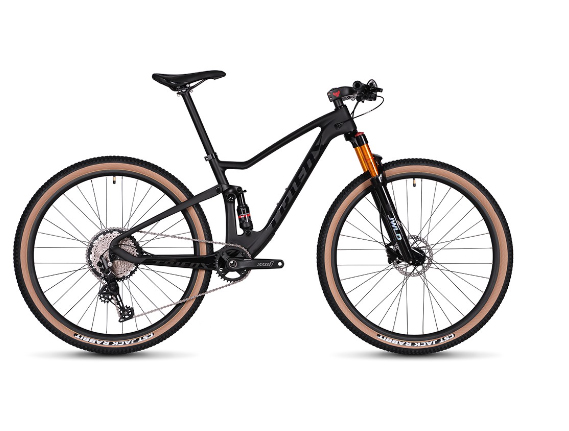
Understanding Your Dual Suspension System
The dual suspension system in your bicycle consists of a front fork and a rear shock absorber. The front fork absorbs impacts from the front wheel, while the rear shock absorber does the same for the rear wheel. These components work together to provide a smoother ride over rough terrain.
Routine Maintenance
Regular maintenance of your dual suspension bicycle involves several steps:
1. Check for Loose Bolts: Ensure all bolts, especially those on the suspension system, are tight.
2. Check Tire Pressure:Proper tire pressure is crucial for optimal suspension performance. Consult your bike’s manual for the recommended pressure.
3. Inspect the Frame: Look for cracks or damage that could affect the bike's structural integrity.
Adjusting Your Suspension
Adjusting your suspension to match your weight and riding style can significantly improve your ride quality. Here's how:
1. Adjust the Sag:Sag refers to how much your suspension compresses under your weight. Most manufacturers recommend a sag of about 25-30% of the total travel.
2. Adjust the Rebound:The rebound controls how quickly the suspension returns to its original position after compressing. The right setting depends on personal preference and the terrain.
Professional Servicing
While routine maintenance can be done at home, some tasks require a professional. These include replacing worn-out parts and performing more complex adjustments. If you're unsure, it's best to consult a professional.
Conclusion
Maintaining and adjusting your dual suspension bicycle is crucial for optimal performance. Regular checks and adjustments will keep your ride smooth and prolong the lifespan of your bike. Happy cycling!
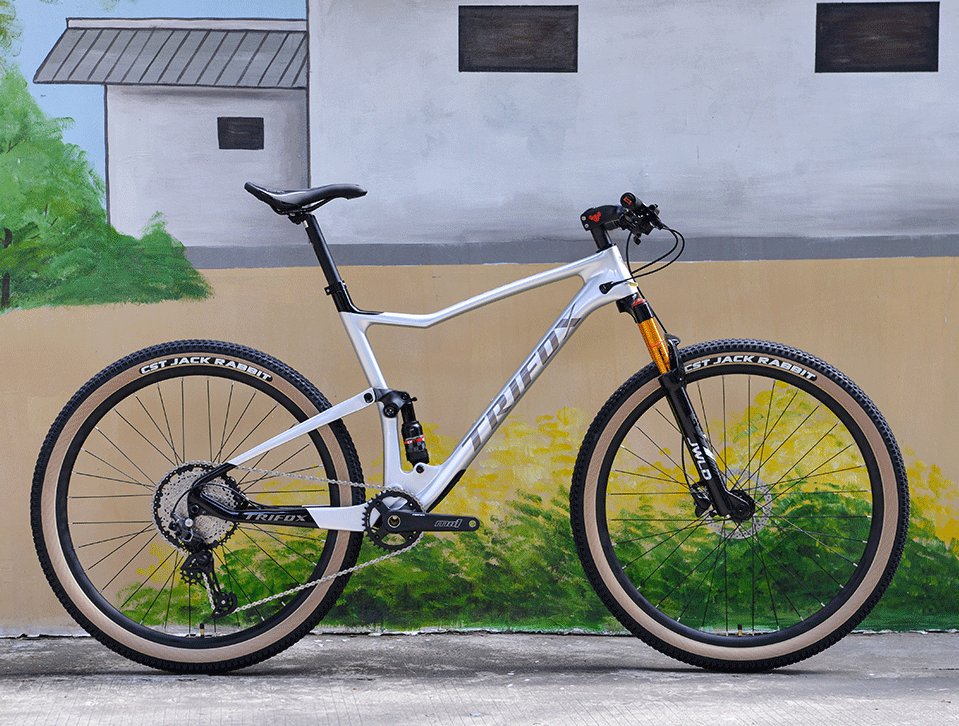
Are you a mountain biking enthusiast? If you are, you’ll know that nothing quite beats the adrenaline rush that comes with cycling on rocky, uneven terrain, with breathtaking views all around. But when it comes to mountain biking, having the right bike can make all the difference. With constant advancements in bike technology, having a full-suspension mountain bike can greatly improve your experience.
In this blog post, we’ll be taking a close look at the 2023 full suspension mountain bikes, and one bike in particular, the 29er Carbon Full Pioneer Bicycle from Trifox Bike.
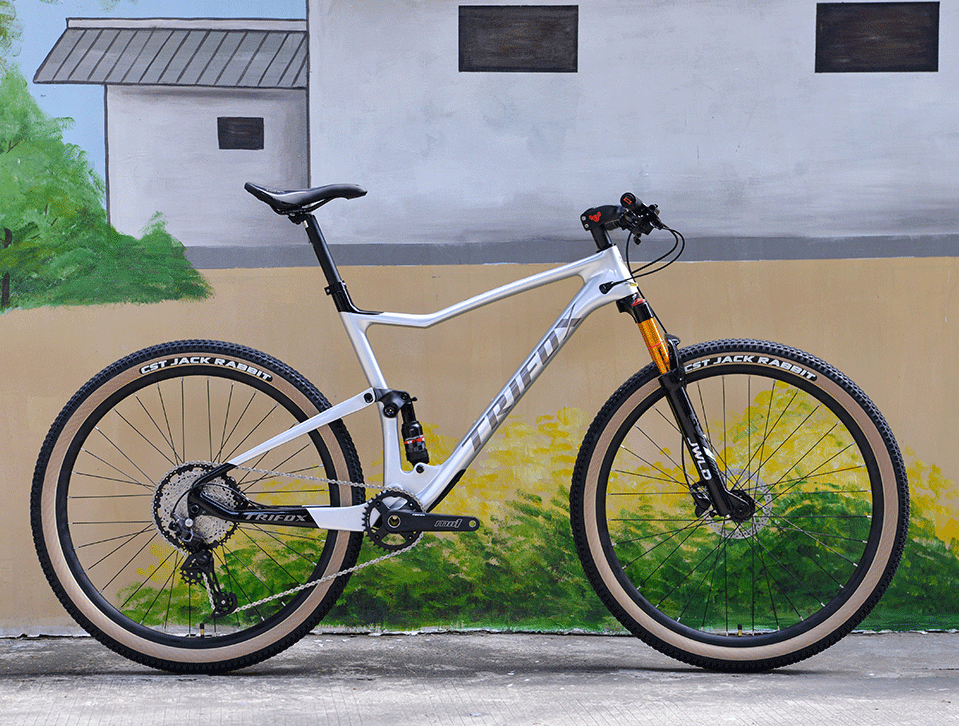
1. What are full suspension mountain bikes?
Full suspension mountain bikes are built to tackle challenging trails and terrains by having both front and rear suspension systems. The front suspension allows for handling the impact of obstacles on the front wheel, while the rear suspension reduces the shock and bounces from the rear wheel. The suspension absorbs the impact of rocks, roots, or dips on the trail, keeping you smoother over rough terrain and providing better control and traction.
2. What are the benefits of owning a full suspension mountain bike?
The benefits of owning a full suspension bike are numerous. You’ll have improved control, and will feel more confident when confronted with tough, technical terrain. Full suspension minimizes the risk of injuries compared to a hardtail mountain bike because you have better control and grip on rough terrain. Additionally, full suspension absorbs vibration, providing a more comfortable ride.
3. What features make the 29er Carbon Full Pioneer Bicycle stand out?
The 29er Carbon Full Pioneer Bicycle is built to handle all terrain conditions confidently. Its carbon frame and fork have increased stiffness to weight ratio, and improved vibration damping abilities. This means that it can easily handle tough terrains like the rocky mountains or sandy trails, without compromising on speed or performance. Its 2.35 Nobby Nic tires make it perfect for both durability and maximum rolling speed.
4. What should you look for when buying a full suspension bike?
Before making a purchase, you should always consider your budget, riding style and trails you’ll be riding on. The full suspension MTB market can be competitive, and it can be challenging to choose the right bike for yourself. Some factors to consider include the type of terrain, frame material, suspension travel, wheel size, and brakes. You should also take the bike for a test ride before purchasing to ensure it fits correctly, comfortably and delivers the performance you need.
5. Conclusion
In conclusion, the 2023 full suspension mountain bikes have pushed the boundaries of what we’ve come to expect. The 29er Carbon Full Pioneer Bicycle is the perfect example of technology advancements in the full suspension bike world. By investing in this kind of bike, you’ll experience the joys of mountain biking in a more comfortable, safe and exhilarating way. Remember when deciding on which full suspension bike to invest in, take your time, compare different bikes and consult experts within the bike industry.
In the end, whichever bike you choose should provide an excellent ride, making mountain biking more enjoyable and exciting than ever before

























































